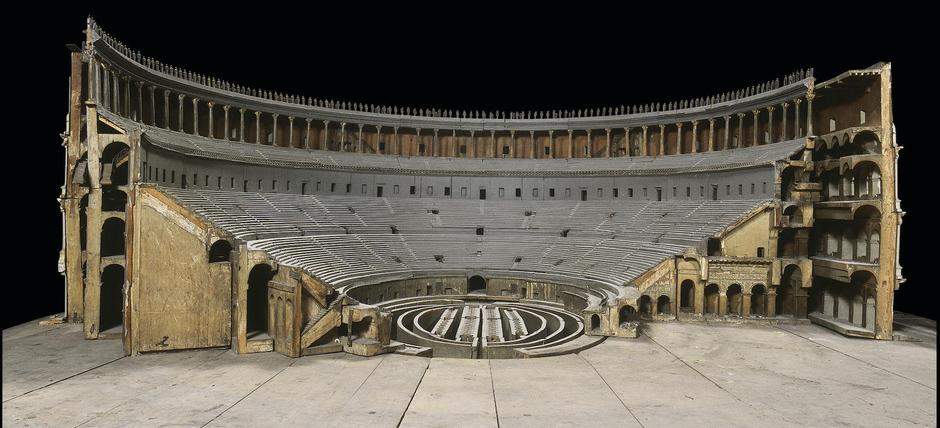The permanent exhibition Il Colosseo si racconta (The Colosseum is told ) created by the Colosseum Archaeological Park in collaboration with theGermanic Archaeological Institute of Rome and theUniversity of Roma Tre was inaugurated on December 21, 2018. The exhibition unfolds along twelve arches of the second level, where the 7.5 million visitors who pass through the gates of the Colosseum each year will be able to retrace (in three languages: Italian, English and Chinese) the entire story of the Amphitheater of the Emperors: from its construction to the early twentieth century, ending with a roundup of images about the Colosseum that has become a universal icon.
The exhibition is divided into seven thematic sections in which visitors will be able to admire graffiti revealing to children what could happen to those who did not obey the law, marble decorations from the imperial and medieval ages, the autograph of painter Hubert Robert engraved in one of the ambulatory pillars, and the epigraph placed by Mussolini in 1926 at the base of the Cross he had repositioned on the arena, which was then removed a few years later to complete the earthworks of the underground.
Alfonsina Russo, head of the Archaeological Park, explains that this is “a first, important stage in the rethinking of visiting the monument. We are studying thematic routes that, through effective signage, will enhance significant itineraries.”
The renovated museum space makes use of a scientific project coordinated by Rossella Rea and was produced by Electa with layout curated by Francesco Cellini and María Margarita Segarra Lagunes. It articulates in seven sections the history of the monument and is characterized, in particular, by the display of decorative marble apparatuses from the imperial and medieval ages; a period, the latter, during which the Colosseum, having lost its original function, is used as a space for commercial, residential and religious activities, which transform its fornixes and arches. From the 17th century, in connection with the arrival in Italy of European aristocrats and intellectuals attracted by the charm of its monuments (Grand Tour), the Colosseum became a must-see destination for all artists.
The autograph of the painter Hubert Robert, carved in one of the pillars of the ambulatory, testifies to this. Joining the Colosseum’s permanent exhibit is the epigraph that in 1926 Mussolini placed at the base of the Cross he had repositioned on the arena, which was removed a few years later to complete the ster ro of the basement. A vintage Istituto Luce film recalls the ceremony of the placement in the presence of Queen Helena. The rest is contemporary history: the Colosseum has increasingly become an icon of Italy, a must-see travel destination with more than 7 million visitors annually, from all over the world. And, for the first time, The Colosseum is being told presents a communicative apparatus, not only in English, but also in Chinese ideograms, corroborating the awareness of increasingly important tourist flows from the Far East. The studies of recent years on the Colosseum, presented in the most recent exhibitions, have flowed into a series of publications, in the sign of a popularization that has as its prerequisite rigorous scientific research. At the beginning of the year, a new guidebook will be added to the rich bibliography on the monument, edited by Rossella Rea, which will also present the results of the most recent excavations, of particular importance for reconstructing the history of the Colosseum.
For all information you can visit the Colosseum Park website.
 |
| The Colosseum is told: permanent exhibition on the history of the Flavian Amphitheater opens |
Warning: the translation into English of the original Italian article was created using automatic tools. We undertake to review all articles, but we do not guarantee the total absence of inaccuracies in the translation due to the program. You can find the original by clicking on the ITA button. If you find any mistake,please contact us.